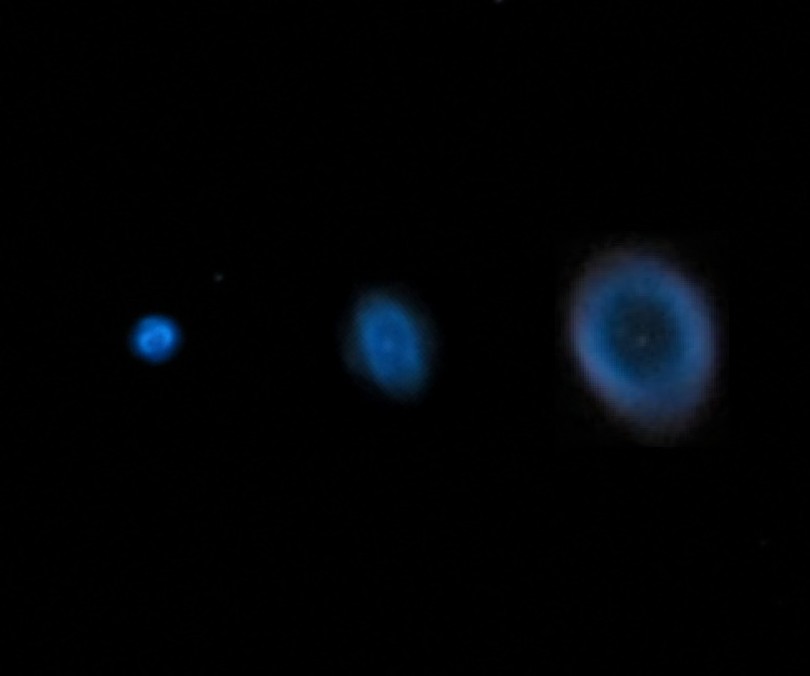
|
|
| Snowball Nebula, Saturn Nebula, M57 the Ring Nebula |
|
Here is a progression of the
evolving nature of a planetary or ring nebula. The phrase "planetary
nebula" is a misnomer. When these objects were first observed, they did look
a bit like fuzzy planets. That's when they got the name
planetary nebula which persists to this day.
Through a low power eyepiece the object on the left, called the Snowball
nebula, looks a bit like Uranus. The middle picture is called the Saturn
Nebula because its size and shape are reminiscent of its namesake Saturn.
The classically shaped nebula on the right is called M57 or the Ring
Nebula, an object large enough and bright enough
to be plainly visible with a modest astronomical scope. It is a
strikingly three dimensional; seemingly hovering like a cosmic smoke ring somewhere
between our earth and the cosmic background. |
|
8" F10 Schmidt Cassegrain Telescope, 40mm
eyepiece, Canon G2 between 3x and 1.8x |